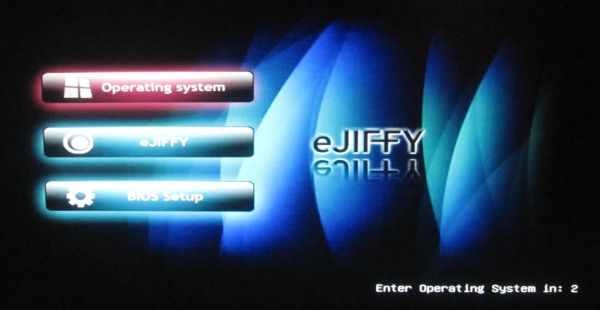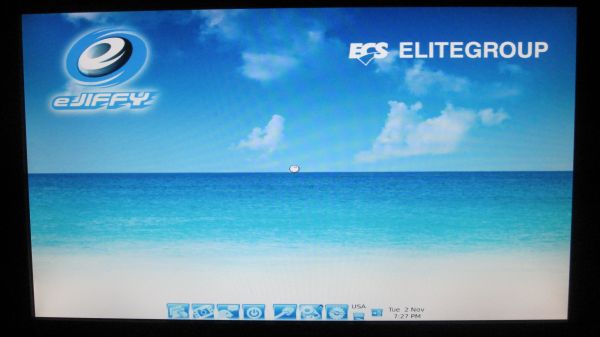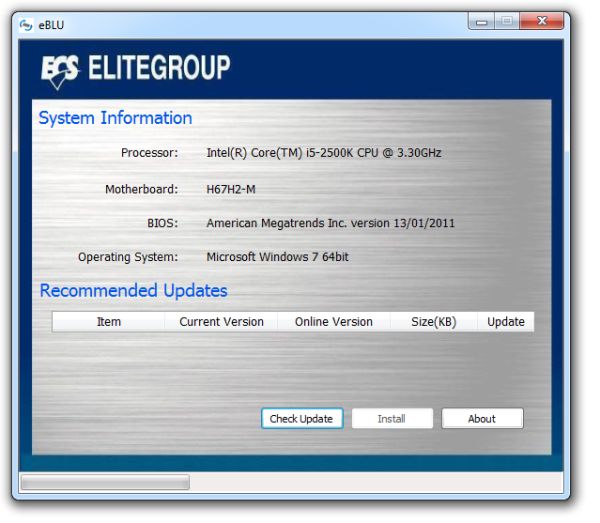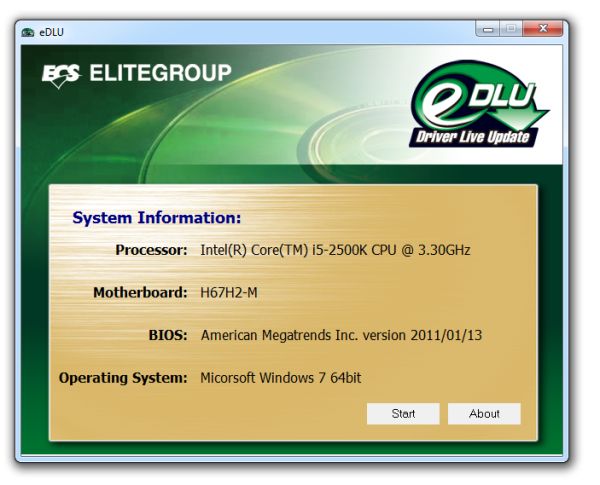H67 – A Triumvirate of Tantalizing Technology
by Ian Cutress on March 27, 2011 6:25 PM EST- Posted in
- Motherboards
- Sandy Bridge
- H67
Board Features
| Market Segment | Performance H67 |
| CPU Interface | LGA 1155 |
| CPU Support | I3/i5/i7 Sandy Bridge |
| Chipset | H67 |
| Base Clock Frequency | 100 MHz |
| DDR3 Memory Speed | 1333 MHz, CL8 8-8-24 |
| Core Voltage | Default, +20 mV to +320 mV offset in 20 mV increments |
| CPU Clock Multiplier | Dependant on CPU |
| DRAM Voltage | Default, -800mV to 630mV offset |
| DRAM Command Rate | Auto, 1T, 2T |
| Memory Slots |
Four 240-pin DDR3 DIMM slots in dual-channel Regular unbuffered DD3 memory Up to 32GB total supported |
| Expansion Slots |
1 x PCI Express 2.0 x16 slot 2 x PCI Express 2.0 x1 slots 1 x PCI slot |
| Onboard SATA/RAID |
2 x SATA 6 Gb/s ports (grey) 3 x SATA 3 Gb/s ports (white) 1 x eSATA 3 Gb/s port |
| Onboard |
2 x SATA 6 Gb/s ports 3 x SATA 3 Gb/s ports 1 x TPM Header 1 x Onboard buzzer 1 x Power button 1 x Reset button Debug LED 1 x S/PDIF Out header 4 x USB 2 connectors support additional 8 USB ports Front panel audio connector 1 x Clear CMOS header |
| Onboard LAN | Dual Realtek RTL8111E Gigabit Fast Ethernet Controllers with Teaming |
| Onboard Audio | Realtek® ALC892 8-Channel HD Audio |
| Power Connectors |
24-pin EATX Power connector 8-pin EATX 12V Power connector |
| Fan Headers |
1 x CPU Fan connector (4-pin) 1 x System Fan connector (4-pin) 1 x Chassis Fan connector (3-pin) |
| I/O Panel |
2 x USB 3.0 ports 4 x USB 2.0 Ports 1 x D-Sub 1 x HDMI Port 1 x DVI Port 1 x Display port 2 x RJ45 LAN connectors 1 x Audio port (Line-in,4x Line-out, SPDIF out) 1 x Clear_CMOS button 1 x eSATA 3Gb/s port |
| BIOS | 03/02/2011 |
An interesting feature on the board is the dual gigabit Ethernet, which supports Teaming, whereby with two cables, the motherboard can utilize both ports for a combined input and output. Unfortunately, the only way that this is relevant to most end users is if the ECS is the bottleneck and you have a 10 Gbit network with a 10 Gbit send/receive source. In that context, the ECS board will hit a peak of 2 Gb/s. The other alternative is to connect the board to two separate networks.
In The Box
- I/O Shield
- 4 Locking SATA cables
- 1 eSATA bracket
The addition of 4 locking SATA cables is definitely welcome. They are not angled, but that entirely depends on the individual case and hard-drive setup. This isn’t as much as what is included with the ASRock board, but similar to the Gigabyte.
Software

The installation CD supplied with the motherboard is fairly easy to navigate – one click on the setup section applies all the drivers related to the motherboard. Though in Windows, I was getting a screen saying ‘Windows can’t verify the publisher of this driver software’, meaning I had to click ‘Install this driver software anyway’ around 10 times.
The main software packaged on the CD is eJiffy, a quick bootable Linux package, eBLU (easy BIOS Live Update), eDLU (easy Driver Live Update), and eSF, the smart fan utility. While these utilities do not go as far as other vendors offerings in terms of complexity, they are simple, quick, and easy to use.
eJiffy
eJiffy is a neat little tool that provides an alternative boot option at startup. Rather than loading the main windows OS, it provides a menu with an 8 second timer giving the option to load into Windows, to load into eJiffy, or easy access into the BIOS.
When selecting the eJiffy option, you are greeted by a very fast booting front end with two main options – an internet browser called eWeb, and simple messaging software called ePal. The internet browser, presumably based on Mozilla, had no problems with flash heavy websites, and seemed as fast as how I find Chrome 10 in Windows.
I quite like this software – easy to use and provides a quick interface to look things up on the web.
eBLU
The BIOS Live Update utility connects to an ECS server to search if a newer BIOS version is available, and then happily installs it in the OS. It also checks itself for newer versions of eBLU online, which is good.
eDLU
The Driver Live Update option does not directly compare the drivers currently installed on the system to their up-to-date counterparts on the ECS website, but take you straight to the download section for the motherboard on the ECS website. A direct driver to server version comparison tool would be a big boost to this board, but unfortunately, this is not it.
eSF
.png)
The Smart Fan utility for the board seems fairly good, until you realize that it only controls one fan header on the board.















56 Comments
View All Comments
bupkus - Monday, March 28, 2011 - link
Agreed. The i3-2100 is a true budget cpu, imho. It should be matched with a true budget mobo-- namely the H61. I hope to see some more info on boards made with that chipset.Taft12 - Monday, March 28, 2011 - link
It's not accurate to call the i3-2100 a "true budget CPU" while we've got stuff like the Athlon II X2 and Pentium E5xxx on the market.cjs150 - Monday, March 28, 2011 - link
I am pleased you said this, because this is something I do not understand either, H67 looks to be a waste of timeASrock seems the best of this silly catagory. I have one of their boards in a file server, nice board, just works without fuss. Perfect for a server. May look at them for next build, instead of my usual ASUS fetish.
One thing though that really bugs me. Why on all the Micro-ATX boards out there do they insist on having the top PCI-E so close to the bottom end of the memory sockets. Have the MB manufacturers not noticed that high end memory is shipping with cooling fans? Several times I have found it impossible to fit a graphics card and the memory fan, virtually every time at the very least I have to ensure that there are no possible shorts by putting electricians tape around the bottom of the memory fan clup on. MB manufacturers it is not difficult, move the PCI-E slot down by 5mm or the memory sokets up by 5mm
bigboxes - Monday, March 28, 2011 - link
Not a bash, but fans on DDR3 ram is mostly frivolous waste. Heck, most ram today doesn't even need fancy heatspreaders because they run so cool. This is about the H67 chipset so I don't think many would waste time/money on buying high end memory that offers little in the terms of performance. Don't worry, Z68 is coming soon and you'll be able to buy your full ATX board that you can load up with the latest and greatest in parts to get that XTREME o/c. This chipset is not marketed for you.ArtShapiro - Monday, March 28, 2011 - link
I'd like to think that I (a decided non-gamer) am the target audience.I currently have a physically large (huge?) desktop system in a Chenboro 105 case. No way this monster can fit in the alcove in my computer desk, so it sits on the floor with the usual scads of cables coming from the desk. What a royal pain to move, clean, etc.
I suspect this summer I'll have an H67 system in a tiny (maybe Antec 300-150) case, little bigger than my tiny Asus TS mini Windows Home Server machine. With no graphic card, this thing should be efficient and dwarf the performance of the existing monster.
The H67 setup fits my needs to an alarming degree!
Art
Concillian - Tuesday, March 29, 2011 - link
What about this system cannot be handled by a significantly cheaper H61 motherboard? I missed that part of why H67 was perfect.
Taft12 - Tuesday, March 29, 2011 - link
He's not a gamer, but maybe he wants the SATA 6Gbit ports? 4 memory slots? USB 3.0?H61 boards are lacking, well, a lot if you're want anything beyond ultra-entry-level.
ArtShapiro - Wednesday, March 30, 2011 - link
Pure power. The cost is irrelevant (within reason); the increased processor of, say, the 2500/2500K will be a nice thing in processor-heavy applications and will probably ensure a longer relevant lifetime for the machine.I figure it's worth it to shell out a little more upfront for the H67.
Art
bobbyto34 - Monday, March 28, 2011 - link
Thanks a lot for testing DPC Latency. This can be a major issue for DAW's users.Spoelie - Monday, March 28, 2011 - link
I would concede that an integrated GPU is a very valuable tool for any computer user. It can be used to eliminate variables when troubleshooting a system, and to prevent downtime when the discrete GPU passes away. For this reason and this reason alone I personally don't buy a system without an integrated GPU anymore, even though I always have discrete GPUs. At least in 2 cases this has helped me tremendously.My personal preference is a cheap but good overclocking mATX board with (support for) iGPU & at least 1 eSATA port. Couldn't care less about SLI/XFire & RAID5, so the 785+SB710 board I now use was perfect, but without USB3 and SATA6 it's starting to show its age. One of the reasons I haven't switched to SNB is that Intel can't provide me that platform yet.
Here's to hoping for cheap mATX Z68 and cheap(er) K series CPUs.